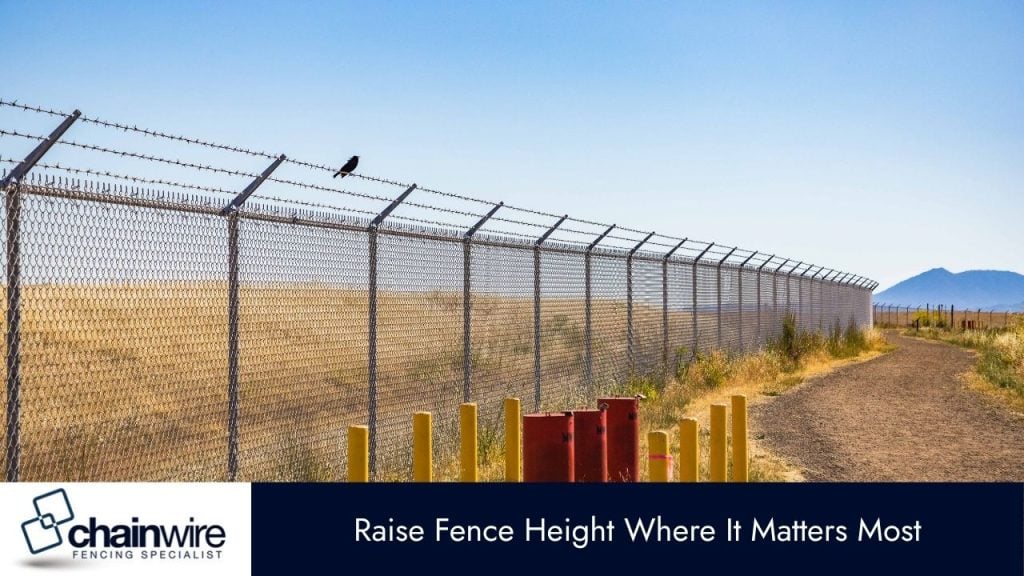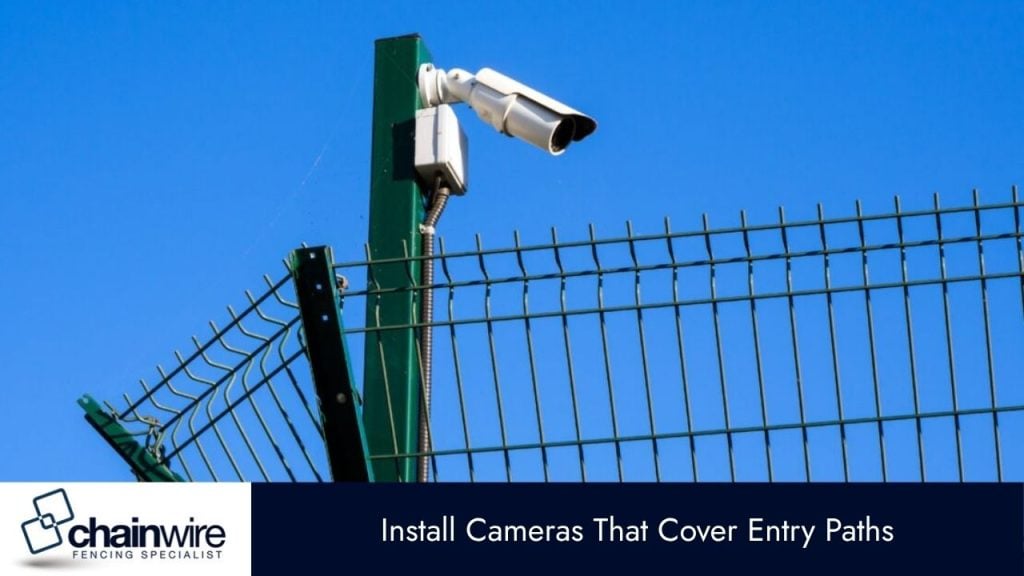Many sites install fencing without considering how people attempt to breach it. Chainwire is strong, but it does not work if the height is too low, the gate is weak, or the base is unsecured. These issues are common on construction sites, warehouses, school grounds, and industrial yards.
Even with solid mesh, intruders can lift the base, climb over, or bypass gaps near structures. Once they gain access, it often goes unnoticed until after equipment, tools, or livestock are missing. What should be a secure barrier turns into a weak perimeter.
This guide outlines practical actions that increase protection across all types of fenced areas. Each fix targets a known problem point so your fence does more than just mark the boundary.
Raise Fence Height Where It Matters Most
If a site is next to a public path, a low fence can be climbed in seconds. Fence height should be adjusted based on exposure. Areas that face open streets, bushland, or back lanes need added height to prevent quick access.
Standard fencing heights often fall between 1.8 and 2.4 metres. Increasing this to 3 metres near pressure points makes climbing much harder. Inward-facing wire or rotating extensions reduce grip points and keep the upper mesh under tension.
Avoid using the same height all around unless every side has equal risk. Height should be applied based on threat direction and how accessible each side of the site is.

Strengthen Gate Sections
Gates are opened and closed more than any other part of the fence. Over time, hinges loosen, latch points wear out, and locks become easier to force. A secure fence can still be breached if the gate area is weak.
Use welded steel frames and lock enclosures that protect the latch. For gates that allow vehicle entry, sliding tracks with internal stops offer more stability than swing gates. Where needed, automated systems can remove the need for padlocks altogether.
Inspect gates weekly. Check for leaning posts, latch resistance, or open gaps between the frame and the mesh. Any looseness should be repaired immediately to prevent forced entry.
Stop Breaches at the Base of the Fence
The bottom edge is where many intrusions happen. Intruders may dig underneath or lift the mesh where it meets soft ground. This is common in areas with no concrete edge or where the soil shifts over time.
To prevent this, the fence can be buried 300 millimetres into the soil during installation. Another option is to pour a concrete strip footing and fix the mesh directly into the surface. For added strength, install tension wire along the bottom to keep the mesh tight and flush with the ground.
These actions block both digging and lifting. They are especially important in animal yards, bush boundaries, and outer zones where visibility is low.

Improve Lighting Along Vulnerable Sections
A fence cannot stop someone who moves unseen. Adding lights increases visibility and discourages attempts to enter during off-hours. This is most useful near gates, blind corners, and sections away from buildings or street lighting.
Place floodlights along the fence line and aim them downward to highlight the mesh. Motion-activated units work well in low-traffic zones and avoid light pollution when not in use. For remote or off-grid areas, solar-powered options can provide steady coverage.
Lights should not create deep shadows or glare. Spread units evenly and check angles to ensure full coverage along the perimeter.
Install Cameras That Cover Entry Paths
Surveillance supports the fence by alerting you to movement and recording events that occur at the boundary. Mount cameras above the fence line so they can monitor movement across the top and along the length of the mesh.
Avoid placing all cameras at the gate. Use overlapping views around the entire site, including quiet sides or lanes where people can approach without being seen. Coverage should start at the outer fence, not just the inside yard.
Modern systems allow alerts to be sent directly to phones or control rooms. This helps staff respond quickly if someone crosses into a protected zone.

Keep Posts Aligned and Well Anchored
Mesh is only effective if the posts are solid. Wide spacing, shallow footing, or poor alignment all cause the fence to weaken over time. This leads to sagging, leaning, and entry points forming.
Space posts at no more than three metres apart. In exposed areas or where there is high wind, reduce this to 2.4 metres. End posts, gate posts, and corners need thicker material and deeper concrete bases for support.
Use bracing wires to add strength along longer runs. Where terrain slopes, step the fence instead of angling it to avoid climbable sections and prevent bending during installation.
Run Perimeter Checks to Prevent Failures
Even a high-quality fence will fail if left unchecked. Gate wear, rusted mesh, and dropped tension all make the fence easier to breach. These problems can be avoided with routine maintenance.
During inspections, check for:
- Gaps forming at the base
- Mesh pulling away from tension wires
- Leaning or unstable posts
- Vegetation or soil buildup causing rust
Clean the base of the fence monthly to prevent moisture and soil from building up around posts. Fix small issues as soon as they appear to stop them from turning into expensive repairs or security risks.

Match Fence Type to the Area’s Purpose
Not every part of a property needs the same fencing setup. The boundary line should use higher mesh with strong base support. Inner dividers or low-traffic partitions may only need standard height without topping.
For animal yards, tensioned low mesh with a buried base works better than high fences. In material storage areas, stable gates with locked enclosures reduce entry from unauthorised access points. For construction zones or mobile worksites, temporary fencing can be locked down without permanent footing.
Each fence section should match the job it needs to do. Avoid applying a single setup across the site without checking how each area is used.
Final Advice from Chainwire Fencing Specialist
At Chainwire Fencing Newcastle, we recommend looking at your fence as one working system. It’s not just about the mesh or the gates—it’s how each part connects and holds up under daily use.
Think about how each section is used. Areas near roads or public access points often need extra height or stronger gates. Fences that stop near buildings or sheds should be closed off properly to prevent climb points. Corners and joins should be reinforced so they stay in place long-term.
Check how people and vehicles move through the site. Your fence should follow the pressure zones—not just the property lines. That’s how weak spots form when layouts don’t match how the space is used.Request a quote if you need a new fence installed or an existing one upgraded to better match your site requirements.

